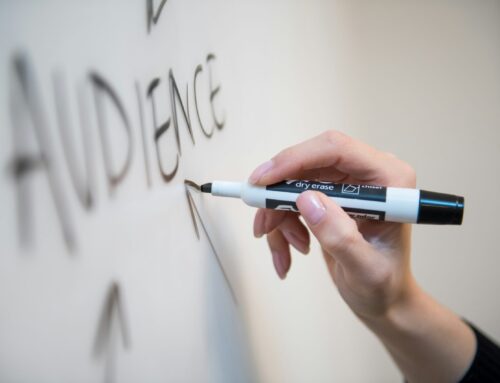This is Part 2 in a series of posts that Julia Reich will share with us about how to hire a graphic designer or design firm. ~Kivi
Guest Post by Julia Reich, Julia Reich Design
In my last post, “How to Hire a Graphic Designer or Design Firm, Part 1: Where to Look” I offered suggestions on where to turn to find designers to work with.
Assuming you’ve found some likely candidates, how do you narrow down your choices? I’ll cover what to look for in an independent designer or design firm so you can pick one with a sensibility and methodology (and pricing) that’s a good match for you and your organization.
Look & Feel
Aesthetics are surely subjective, but there are some standards that apply across the design discipline. In reviewing creative portfolios (which should be easy to find on any firm’s website), look for work that is accessible, straightforward, impactful, and memorable. Avoid trendiness. It should look in line with the current times, but also project into the future 5 or 10 years – do you think the work will be visually relevant then, too?
Media, Industries, and Sectors
When “shopping” for a designer, it’s typical to want to find someone that’s done the exact same thing you need. However, a proficient designer/design firm should be able to work on a broad range of projects. For example, if you need to have a website re-designed, but a colleague at another agency recommends their logo designer, ask the designer if they also do what you need, and look at samples of their work.
A good designer can be just as creative working with an organization in, say, the health care sector as they can in the performing arts for example. As long as they are curious and exhaustive in really getting to know you – by asking questions, talking to stakeholders, and researching your organization – don’t discount them right off the bat if you don’t see exactly the same kind of piece you’re looking for, or past clients that are similar to you, in their portfolio. In fact, sometimes it’s better to find someone that does not work within your field, so your designer comes at your project with a fresh, open approach.
I DO highly recommend finding a designer that works primarily within the nonprofit world. Not only are nonprofit needs unique from your corporate counterparts, but the culture and personality at nonprofits is different. Your designer should have the kind of expertise in creating materials that typify the nonprofit sector, whether that’s communicating diverse messages or designing campaigns that increase donations and awareness.
Finally, if you are looking for a logo design, there are a lot of designers who are highly talented doing this kind of creative work. But if you are looking to undertake a full-scale strategic branding project, take note of designers and firms which clearly state that they offer this service, and have the case studies and testimonials to back it up.
A Quick Note About Designers vs. Developers
When it comes to website projects, designers are not the same as developers. Designers, who are typically responsible for the aesthetics of a site and maintaining your brand online, do not always make great developers, and developers, who are typically responsible for the site’s functionality, can be terrible designers (of course, this is a generalization, and you could very well find talented individuals whose left and right brains are equally robust).
If you hire a solo designer, be aware that they may be partnering with another individual to do the development. This is a good thing, since each person on the creative team is doing what they do best. Ensure your designer is the main point person. If s/he is able to manage workflow and facilitate communication between yourself and the developer for the duration of the project, you should be in good hands.
Many firms are full-service operations, and can create your entire website from concept through completion. See if they have both designers and developers on staff. In either case, check out designers/design firms online portfolios – do you like their designs? Do the sites they create offer the kind of features and functionality you’d like for your site? Are you able to move around their clients’ sites easily, and is the experience enjoyable?
Read more here about designers vs. developers, and why knowing the difference can ensure a successful site.
The Interview
Arrange for three to five designers to visit for an in-person meeting to discuss their work and your project. Whether the designer chooses to display their work in an old-fashioned portfolio with hard copies, online, or using a PowerPoint presentation, here’s some tips on what to ask and look for:
- Is the work consistently strong, and in a style that resonates with you and the personality of your organization? (strong = accessible, straightforward, impactful, and memorable)
- Ask about the challenges inherent in each project, and how the client articulated what they needed. How successful was the solution the designer came up with? Are there quantifiable results, or client testimonials? Listen carefully for articulate and informed answers. Be aware of work that is pretty to look at, but does not solve the client’s unique problems.
- Find out if the work you are viewing was actually approved and produced/printed (good!), or if it is student/personal work (red flag alert!).
- Ask what the designer’s role was in each project. Look for someone who can manage an entire project from concept through completion, and work with a printer or developer to ensure quality control for the duration.
- Ask the designer to explain their process. You should come away from the meeting with a clear understanding of each phase, what the deliverables are and how they will be presented, how many rounds of revisions you’ll get, and what they expect you to provide/do.
- Be prepared to explain the full scope of work so the designer will be able to get back to you with a price estimate and/or proposal.
That Certain… Je Ne Sais Quois
Other than creativity and expertise, your designer of choice should be intelligent, inspired, and responsive to your needs. You should feel comfortable – not intimidated or awkward- communicating with them. Ultimately, a successful project – whether it’s a logo, brochure, or website – will be the result of a designer/client relationship with mutual rapport and respect.
Julia is Principal of Julia Reich Design, which helps nonprofit organizations bring their mission to life with award-winning brand strategy, graphic design, and web design services. Clients love her team’s top-notch creative work combined with an affordable, personalized approach.







